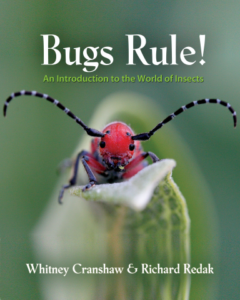One of the challenges of being a general naturalist – particularly a self-taught one – is that of establishing a sturdy foundation in all, or at least most, of the major areas of nature study. For those who undertake any formal, institutionally guided study in one of the fields, such a foundation is provided in the required, hierarchically structured first and second year courses that lead to increasingly advanced – and specialized – areas of study. But for those of us “going it alone,” despite reading dozens of books on entomology, botany, or what-have-you, we often don’t have the experience of that one course of study to lay the comprehensive groundwork on which to build higher levels of understanding – hence our structures are most always riven with gaps and lack sufficient robustness to rise past a certain height.
The challenge is that popular works of natural history, even when delving into relatively complex topics, usually only explain the information pertinent to the subject at hand. What is needed is a work that can provide the full foundation of an area of study – a textbook, for example. However when it comes to the sciences, textbooks are designed to be used in conjunction with an instructor-led course, often wooden in style to the point of unreadability, and generally expensive to the point of absurdity. Fortunately, when it comes to entomology, an exception recently was made known to me: Bugs Rule! An Introduction to the World of Insects by Whitney Cranshaw and Richard Redak.
Written to be primarily used at an undergraduate level in a general introduction to entomology course for non-majors, this remarkably lively book breaks a number of the rules for textbooks. It is entirely suitable for self-study. It is every bit as lively in its style and interesting in its content as any work of popular natural history. And it lacks all the hackneyed apparatuses that make many traditional textbooks off-putting to all but those for whom they are required reading. (It is also well within the price range of most anyone interested in reading it.)
What makes Bugs Rule! such a pleasure to read – in addition to the extensive expertise and superb writing skills of its authors – is its notably wide area of focus. Rather than presenting only a very “close-in” explanation of the various arthropod orders – including such non-insect arthropods as spiders, scorpions, centipedes, millipedes, and even crustaceans – Cranshaw and Redak “pull back” in their perspective and provide a substantial amount of natural history information about their subjects, including relationships to and interactions with other life forms.
Not only does Bugs Rule! present to its readers the physiology, common behaviors, feeding habits, and reproductive methods of the major orders, it also brings a great amount of rational perspective to its subjects. Let’s face it – many people, even a fair number of those interested in natural history, find many orders of the Arthropoda frightening, or at least a cause of unease. On occasion such feelings are the result of genuine phobias, however more often they are simply caused by popular misunderstandings.
Which is why the authors’ straight-forward explanations as to which of their subjects are venomous to a level threatening to humans, vectors of potentially dangerous diseases, or genuine threats to agriculture, and which are not (this last being a far larger number, as well as containing some noteworthy surprises) is so important an element in the overall usefulness of the book. It takes the work from being merely an academic textbook and makes it a genuinely useful tool for understanding at a practical, everyday life level for its readers.
As one who, once upon a time, obtained a degree in English literature, a particularly helpful element that begins the overview of each taxonomic order presented is the “entomology etymology,” which defines the order’s taxonomic name and explains why it is used to represent the collection of species about to be presented. This is not a side-bar or call-out box that could easily be overlooked, but the opening element of the text itself, making it unmissable and reinforcing its importance to what is to follow. Such techniques are the sign of not only experienced instructors, but inspired ones who know that all the “whats” of any subject are next to meaningless unless they are strongly and early joined with the “whys.”
Of course, in addition to individual readers, there will be (it is most earnestly hoped) instructors who will wish to us Bugs Rule! in their classrooms. To this purpose, Princeton University Press maintains an extensive on-line, freely accessible illustration package from the book’s extensive image collection that can be used for the creation of PowerPoint presentations, hand-outs, or any other supplementary purpose desired.
Bugs Rule! is highly recommended for all who wish to build a solid foundation in their understanding of entomology, as well as for those who wish to fill-in the gaps of what study they’ve already undertaken. It is also heartily recommended for instructors for classroom use – undergraduate (as mentioned above) as well as perhaps secondary school courses. Finally, public natural history program organizers (Master Naturalist, Master Gardener, etc.) should also give this book serious consideration for inclusion in their activities for its remarkable ability integrate its subject into so many other areas of study.
 Title: Bugs Rule! An Introduction to the World of Insects
Title: Bugs Rule! An Introduction to the World of Insects
Authors: Whitney Cranshaw & Richard Redak
Publisher: Princeton University Press
Format: hardcover
Pages: 496 pp., with 830+ color photos, 18 tables
ISBN: 9780691124957
Published: 2013
In accordance with Federal Trade Commission 16 CFR Part 255, it is disclosed that the copy of the book read in order to produce this review was provided gratis to the reviewer by the publisher.
